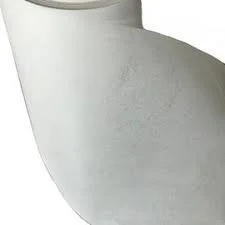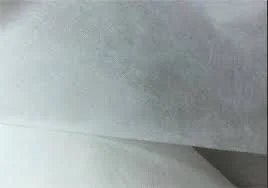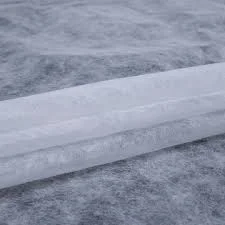In the textile industry, non-woven fabrics have gained popularity due to their versatility and wide range of applications. One such type of non-woven fabric is PVA (Polyvinyl Alcohol) water-soluble non-woven fabric. This unique fabric is manufactured using special spinning technology that involves the use of PVA fibers. In this article, we will explore how PVA water-soluble non-woven fabrics are manufactured, highlighting the spinning process and the advantages of these fabrics.

Understanding PVA Water-Soluble Non-Woven Fabrics
PVA water-soluble non-woven fabrics are a type of non-woven fabric that is made from water-soluble PVA fibers. These fabrics dissolve completely in water, making them highly suitable for applications that require temporary support or easy removal. PVA water-soluble non-woven fabrics are commonly used in industries such as hygiene, medical, embroidery, and packaging.
The Spinning Process:
The manufacturing of PVA water-soluble non-woven fabrics involves a specialized spinning process. Let's take a closer look at the steps involved:
Polymerization:
The first step in the process is the polymerization of vinyl acetate to form polyvinyl acetate (PVAc). This is achieved by subjecting vinyl acetate to a polymerization reaction, usually in the presence of a catalyst. The resulting PVAc is then hydrolyzed to convert it into polyvinyl alcohol (PVA), which is water-soluble.
Filament Formation:
Once the PVA is obtained, it is dissolved in water to form a solution. This PVA solution is then extruded through spinnerets, which are small openings that resemble showerheads. The extrusion process creates continuous filaments of PVA, which are then solidified using a cooling process. The filaments can be of various thicknesses, depending on the desired characteristics of the final non-woven fabric.
Web Formation:
The continuous PVA filaments are then laid down in a random manner onto a moving conveyor belt or drum. This process, known as web formation or web laying, creates a non-woven fabric structure from the PVA filaments. The web formation can be achieved through various methods, including air-laid, wet-laid, or spunbond processes.
Bonding:
To give the PVA non-woven fabric strength and stability, the PVA fibers need to be bonded together. This is typically done through a bonding process using heat, pressure, or chemicals. Heat bonding involves passing the non-woven fabric through heated calender rollers, which melt the PVA fibers and create bonds between them. Chemical bonding involves the use of PVA-compatible chemicals that react with the fibers to form bonds. Pressure bonding, also known as needle punching, uses barbed needles to mechanically interlock the fibers, creating a bonded fabric.

Advantages of PVA Water-Soluble Non-Woven Fabrics
PVA water-soluble non-woven fabrics offer several advantages that make them suitable for specific applications:
Water Solubility:
The primary advantage of PVA water-soluble non-woven fabrics is their ability to dissolve completely in water. This property makes them ideal for applications that require temporary support or easy removal. For example, in the hygiene industry, PVA water-soluble non-woven fabrics are used in wet wipes, where the fabric dissolves upon contact with water, releasing the cleansing agents.
Biodegradability:
PVA is a biodegradable material, which means that PVA water-soluble non-woven fabrics can break down naturally over time. This makes them an environmentally friendly option compared to non-biodegradable materials. PVA water-soluble non-woven fabrics can be disposed of safely without causing long-term harm to the environment.
Versatility:
PVA water-soluble non-woven fabrics are versatile and can be customized to meet specific requirements. They can be manufactured with different thicknesses, weights, and physical properties to suit various applications. This versatility allows for a wide range of uses, from medical and hygiene products to embroidery stabilizers and packaging materials.
Hygiene and Safety:
PVA water-soluble non-woven fabrics are safe and hygienic to use. They are hypoallergenic, free from harmful chemicals, and do not leave any residue after dissolution. This makes them suitable for sensitive applications, such as medical dressings and wound care products.

Conclusion
PVA water-soluble non-woven fabrics are a unique type of non-woven fabric that offers water solubility, biodegradability, versatility, and safety. Through a specialized spinning process, PVA fibers are transformed into non-woven fabrics that can dissolve completely in water. These fabrics find applications in various industries, including hygiene, medical, embroidery, and packaging. The manufacturing process and the advantageous properties of PVAwater-soluble non-woven fabrics make them a valuable choice for temporary support and easy removal in specific applications. As the demand for environmentally friendly and versatile materials continues to grow, PVA water-soluble non-woven fabrics are likely to find even more applications in the textile industry.
